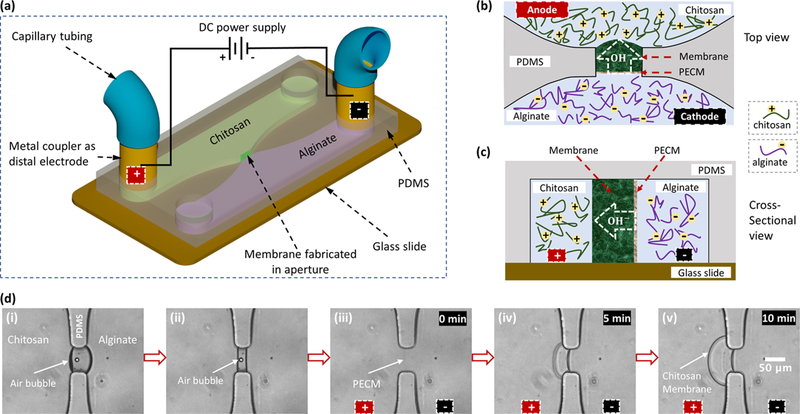Figure 1.
Interfacial electrofabrication of a chitosan membrane in poly(dimethylsiloxane) (PDMS) microchannels with distal electrodes. (a) Schematic of the electrofabrication across an aperture between two microchannels containing positively charge chitosan (green) and negatively charged alginate (purple) solutions. The two metal couplers at the channel terminals function as both capillary connectors and distal electrodes. (b, c) Schematic top and cross-sectional views of the chitosan membrane growth due to the ion flow from alginate to chitosan solutions. (d) Sequence of the interfacial electrofabrication in microfluidics: (i) an air bubble was naturally trapped inside the aperture due to the hydrophobicity of PDMS; (ii) the air bubble was vacuumed out by an add-on PDMS chamber (not shown); (iii) a polyelectrolyte complex membrane (PECM) was spontaneously formed between chitosan (pH 5.3) and alginate (pH 6); and (iv), (v) the chitosan membrane was grown to 30 and 56 μm thick in 5 and 10 min, respectively, at a current of 60 A/m2 applied through the distal electrodes.

